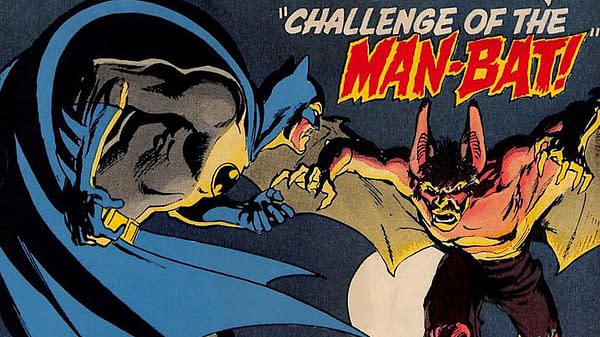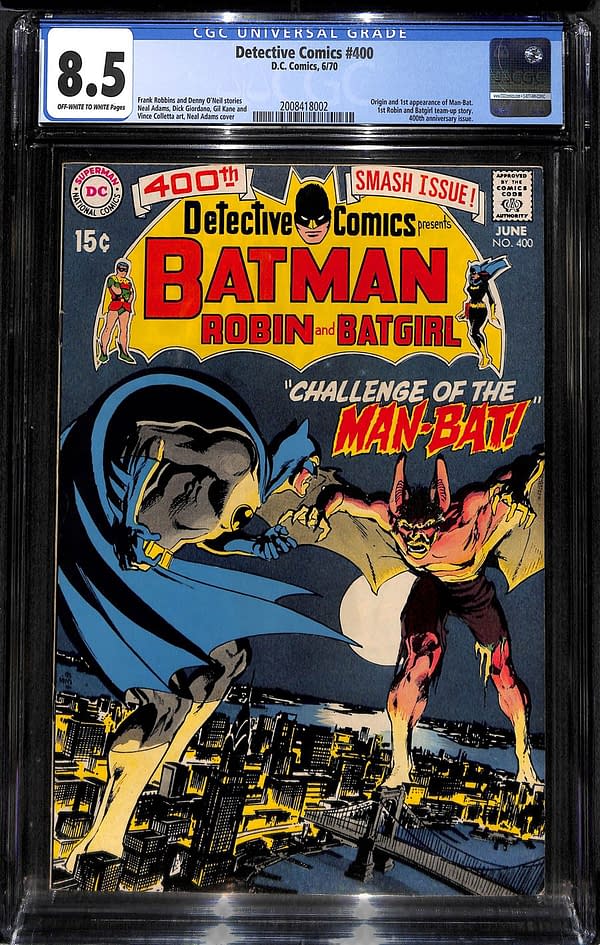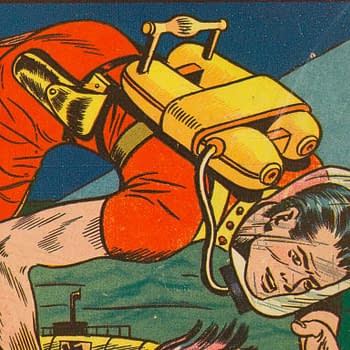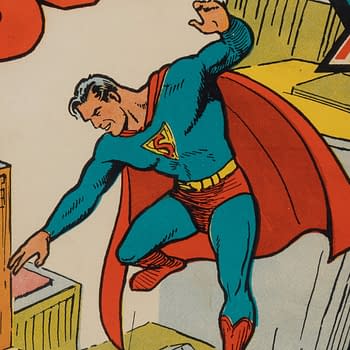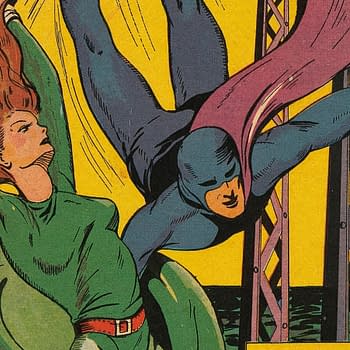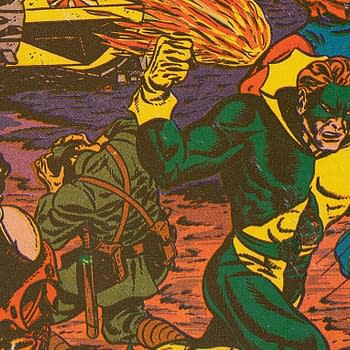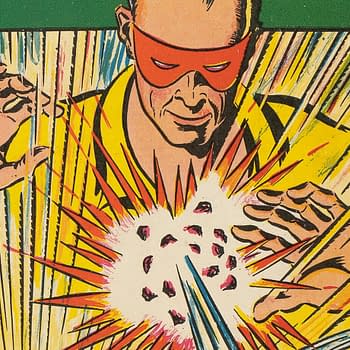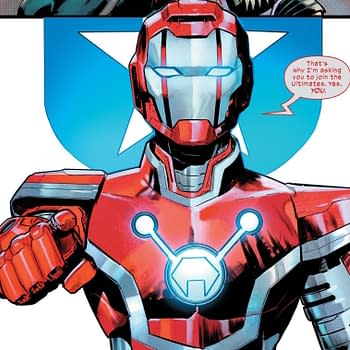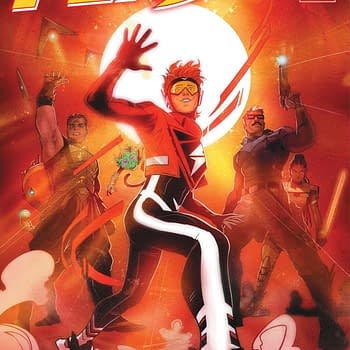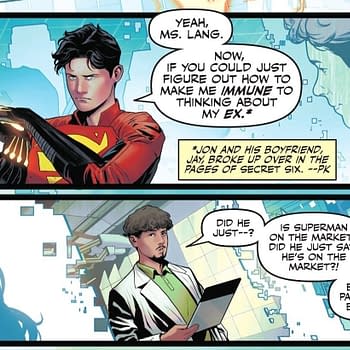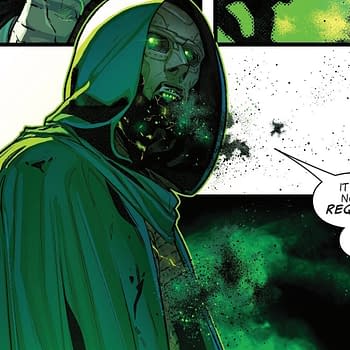Posted in: Comic Connect Sponsored, Comics, Comics History, Vintage Paper | Tagged: Batman, detective comics, man bat, neal adams
Man-Bat, Detective Comics #400, and What Really Ended The Silver Age
Collectors like boundaries. We like to know when things start, and when they stop. Knowing such things is an important requirement, because otherwise… well, you can't just collect all the comic books, can you? Because even monetary demands aside, then pretty soon you'd have to have a warehouse to put all that vintage paper in and so on (cough). Comic book collectors largely agree on where the Golden Age starts (Action Comics #1), and where the Silver Age starts (Showcase #4). There's room to quibble about these things, for example, bring Detective Comics #225 into it and alternative theories of that nature, and discussions like that are part of the fun. But mostly, there's a consensus on those two starting points.
The starting point of the Bronze Age is a little bit harder to pin down. Green Lantern #76 (cover dated April 1970) by Dennis O'Neil and Neal Adams, is widely praised as the beginning of a run of comics that tackled wider and more sophisticated social issues than most mainstream comics had tried up to that point. It's the beginning of a brilliant run and one of my all-time favorites, and a worthy contender for the start of the Bronze Age.
Marvel's Conan #1 (cover-dated October 1970) by Barry Windsor-Smith and Roy Thomas is another often-discussed marker for the beginning of the era. The brilliance of the art and story undeniably helped broaden the appeal of Robert E. Howard's signature barbarian for new generations of fans.
Green Lantern #76 and Conan #1 are both great comics, but I've always found it difficult to see them as starting points for the subsequent era of comics publishing. Starting points imply that they started a trend that was followed by others. While there were certainly more socially-conscious comics to come in the 1970s, and also more sword-and-sorcery comics, I've never seen either of those things as the defining quality of that era.
What do you think of when you think of the comics of the 1970s? Monsters. Anti-Heroes. Monstrous Anti-Heroes: Morbius, Werewolf by Night, Ghost Rider, Marvel's Dracula, Blade, Swamp Thing and more. One can make a pretty good case that this started with Man-Bat in Detective Comics #400 in a story by Neal Adams and Frank Robbins (cover-dated June 1970).
Running from Batmania
There's some disagreement over who actually created the character Man-Bat. That's certainly not an unusual situation in the context of comic book history, but in this case it actually makes our case that Detective Comics #400 is a better starting point for the Bronze Age than either Green Lantern #76 or Conan #1.
Creator Neal Adams has long stated that the character is his creation. Adams is a creator with a track record of decades of creative excellence, and played a defining role in the comics of the era, so his involvement here carries a lot of weight. In a 2005 interview, he said:
So when Frank Robbins was in a story meeting with Julie Schwartz, Frank Robbins didn't have a story. I had already written a synopsis for Man-Bat, and because I was kind of a fan of Frank Robbins, and I saw they were in a—and they were going nowhere, and they asked me if I had a story idea, I said, "Well, sure, I actually do have a good story idea." They said, "What?" I said, "Man-Bat." And Julie Schwartz laughed at me, as if I was an idiot. And I said, "I'll tell you what, Julie. If Marvel Comics decides to do Man-Bat, and they have the right to do it, DC Comics is screwed. This is a terrific idea. I'm not going to take it over there, but I'm telling you, sooner or later, it's going to occur to somebody at Marvel: 'Hey, why don't we do a Man-Bat?' And that'll be it. "Alright, let's do the story." So I started to go over the story, and then I pulled out the synopsis, and I gave it to Frank Robbins. And that's what he did it from. So it's all my story: hundred percent. With Frank's grateful thanks. And if he were here, he'd tell you so.
However, longtime DC Comics Batman line editor Julius Schwartz's account of the matter differs from this. "There's a lot of talk about who created Man-Bat," Schwartz is quoted as saying in Les Daniels' Batman: The Complete History, "The Neal Adams version is not my version."
Schwartz's editorial mandate had been to move the character away from the more light-hearted, sometimes psychedelic era of Bat-Mite and aliens that was at first brought on by industry trends in reaction to the Comics Code, and later by the popularity of the Adam West Batman television series that we think of today as Batman '66. But the public had quickly rediscovered its appetite for darker material as the 1960s drew to a close, as exemplified at the box office by the likes of Night of the Living Dead and Rosemary's Baby (1968) among others. Given that, a darker version of the character who is the living embodiment of the "I must become a bat" notion seems a good fit.
As for what Schwartz might have meant by "The Neal Adams version is not my version", I think I have some idea. Decades prior to 1970, Schwartz had co-authored an article about the Great Moon Hoax of 1835 for a fanzine he edited, Fantasy Magazine. The Great Moon Hoax was an infamous bit of fake news about the supposed discovery of a race of Bat-Men on the moon. The cover of this 1937 issue of Fantasy Magazine might give us a little inkling of what Schwartz may have had in mind for Man-Bat.
Most histories and references simply split the baby when it comes to giving credit for the creation of the character. However, there's a third party to be heard from with some relevant info. Here's Roy Thomas in the preface to X-Men Masterworks Volume 6, discussing the origins of the villain Sauron:
We had a spot of trouble with #60, which introduced the villain Sauron. Because he was an "energy vampire," Neal and I wanted him to be a human bat — which would've made him a forerunner of the later DC character, the Man-Bat. But either we checked with the Comics Code in advance to be on the safe side — or else we tried to mentally anticipate what the censors would say — and it was decided a bat would be too close to a (Code-forbidden) real vampire. So we made him a human pterosaur…which, actually, fit well with the upcoming Savage Land segment. But we still named him Lykos, a nod to the world "lycanthropy." (We also got a nasty letter from the Tolkien people over the use of the name Sauron — and while we basically ignored them, I wish i'd named the character something else.)
This lends weight to what Adams has said about the origins of Man-Bat on a couple of fronts — he had pitched a human bat to Marvel for X-Men #60 (cover-dated Sept 1969) and Marvel had come close to doing it. It also leads us directly to Man-Bat's importance as a character in the context of the beginning of the Bronze Age. Marvel either didn't want to try it over Comics Code concerns, or had tried it and been denied by Code censors.
But the next year, Adams made his case to DC Comics, the character was published in Detective Comics #400 (cover-dated June 1970) — and was Code-approved.
Monsters Unleashed
Much has been written about the story in Amazing Spider-Man #96-98 by Stan Lee and Gil Kane (cover-dated May-July 1971) about the dangers of drug abuse, which ran without Comics Code approval and ultimately played a significant role in triggering revisions to the Code issued later that year which updated guidelines for the depiction of drug use in comics. However, the Code had another revision that also had a huge impact on the comics that were to follow. While the original 1954 Code prohibited "scenes dealing with, or instruments associated with walking dead, torture, vampires and vampirism, ghouls, cannibalism, and werewolfism", the 1971 code relented on a few of these points:
Scenes dealing with, or instruments associated with walking dead, or torture, shall not be used. Vampires, ghouls and werewolves shall be permitted to be used when handled in the classic tradition such as Frankenstein, Dracula, and other high calibre literary works written by Edgar Allen Poe, Saki, Conan Doyle and other respected authors whose works are read in schools around the world.
It might seem like this opened the door to comic horror just a crack from our perspective decades later, but the comics industry took full advantage of the opening with characters like Morbius, Werewolf by Night, Marvel's versions of Dracula and Frankenstein's Monster, Ghost Rider, Swamp Thing, and many others. The statements of Roy Thomas and Neal Adams about the creation of Sauron and Man-Bat suggests that Detective Comics #400 may have nudged the door open just enough to make room for the rest to follow (even a little before those '71 Code changes were made official, it appears).
Comic Connect has a very nice Detective Comics #400 CGC 8.5 up for auction tonight. Even if you disagree with my theory that it's the true start of comics' Bronze Age, it's a great comic from one of the most important creators in the medium, and our first look at the character Man-Bat.



